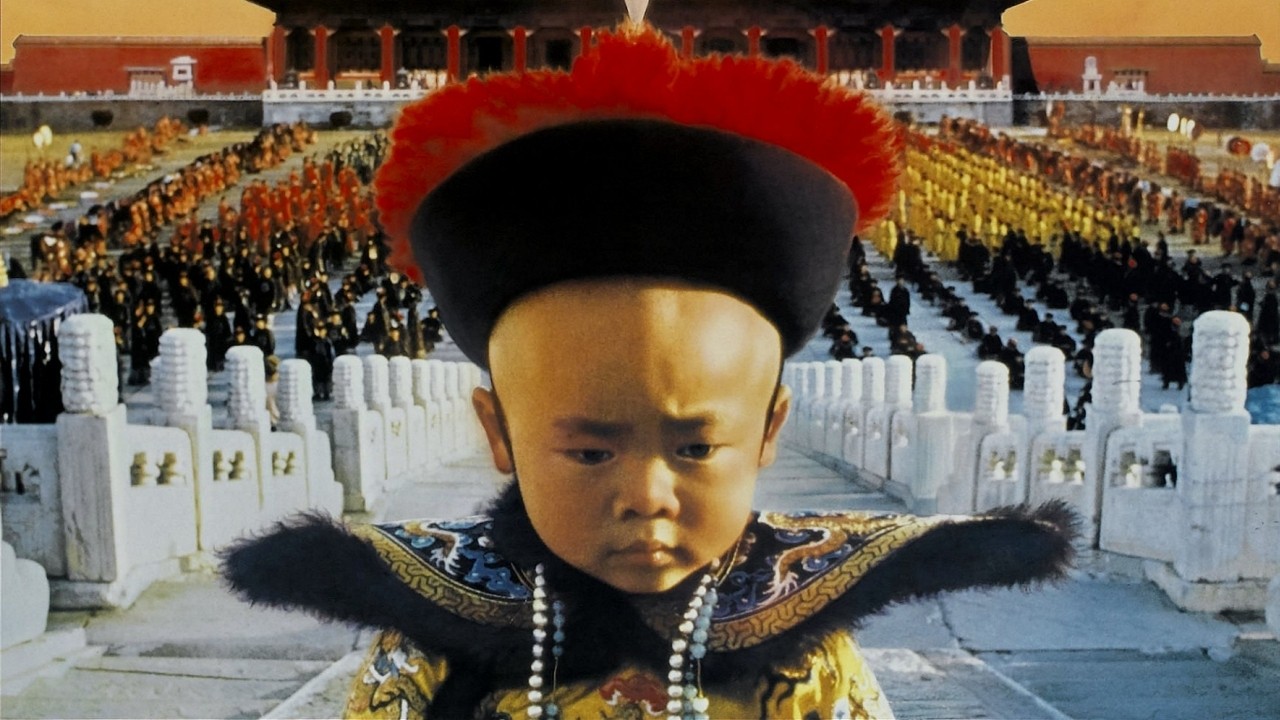
Before CG, 2D or 3D simulation to create massive crowds, Hollywood relied on extras—real people who laboriously had to be controlled, clothed, fed and paid (nowadays, from $50-$100 per 8 hours on the set, depending on the budget, of course).
These are those that assemble the huge armies in great land battles. Or the crowd that gathers in the plaza when the king makes his speech. Or the blood-thirsty spectators in the arena, cheering “Death! Death!”. These are the biblical and historical movies of yore that demanded a “cast of thousands.” For without these extras, Cecil B. DeMille probably wouldn’t have a career. In other words, movies that we call “epic!”
1. Metropolis (1927)
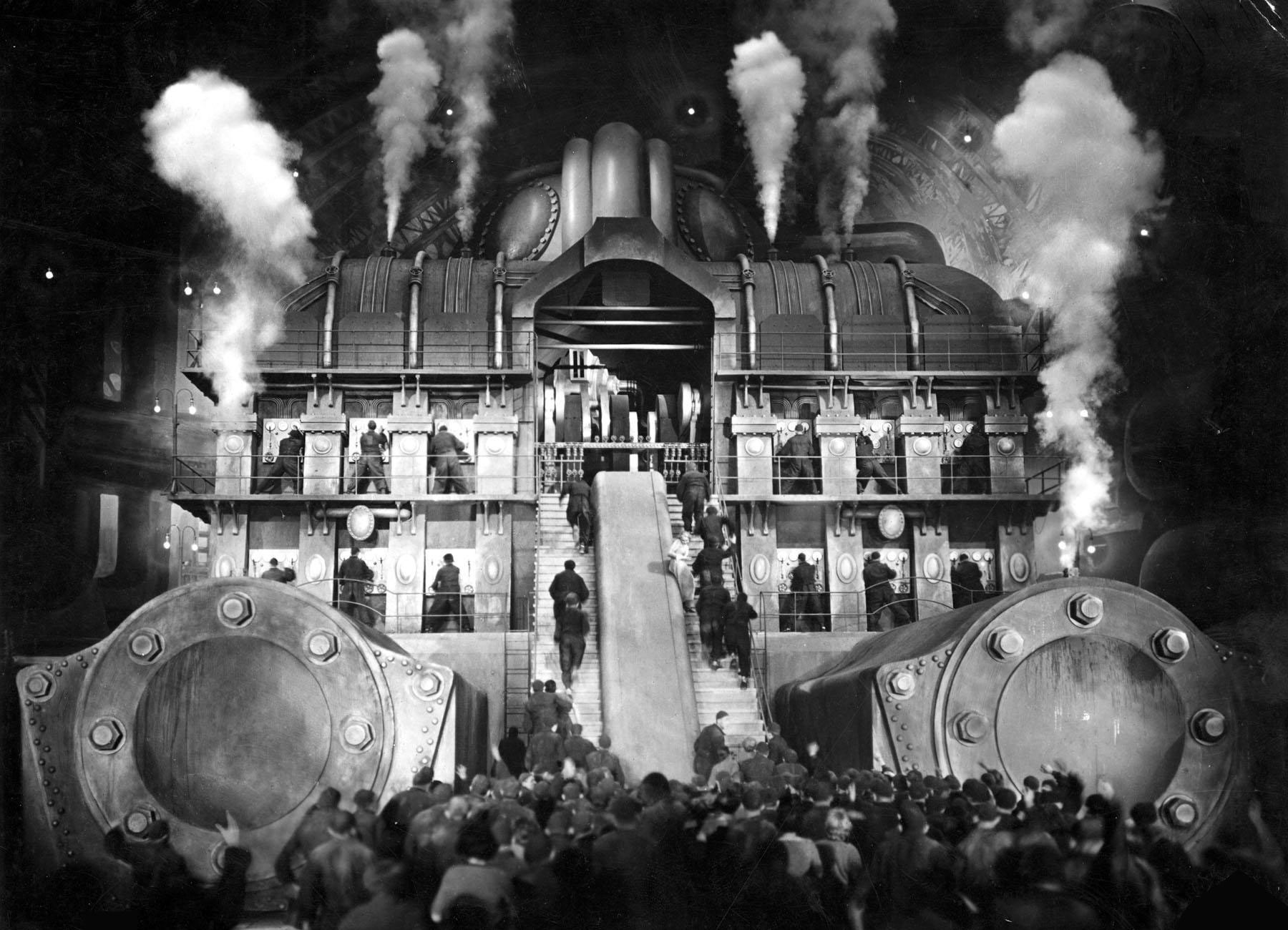
Fritz Lang’s hugely influential silent masterpiece was responsible for the look and feel of dystopian science fiction that came after it: Things to Come (1936), Blade Runner (1982), Brazil (1985), The Fifth Element (1997) and Minority Report (2002). Fashion and music also took its cue, from Madonna to Lady Gaga, Beyonce to Kylie Minogue, Givency to Versace, to the mad scientist hairdo, Metropolis took a shot at what the future would be like, and defined it.
Conceived by Lang and his wife Thea von Harbou, the movie is essentially about class struggle in a future governed by demi-gods. It opens with shots of underground, zombie-like workers by the hundreds operate giant machines that power the city. The sets of Metropolis are huge with plenty of spaces to fill.
With a budget of 5 million Reichsmarks, it was the most expensive movie of that time. And speaking of, no less than Hitler and Goebbels were crazy about the film, even offering Lang, who was Jewish, to become a honorary Aryan. “Mr. Lang, we decide who is Jewish and who is not,” Goebbels was said to have told Lang, who immediately left for Paris that very night.
When the workers, under the influence of a crazy-eyed woman finally rebelled against their masters, the full number of extras is showcased. Promotions for the film boasted 37,000 extras, broken down as follows: 25,000 men, 11,000 women, 1,100 bald men, 750 children, 100 dark-skinned people and 25 Asians.
Originally, Lang wanted 4,000 bald extras, but producer Erich Pommer was only able to find 1,000 that were willing to shave their heads, so the director used an optical multiplier to make the 1,000 bald extras look like 4,000 (this technique would also be a used in the future). The story also required that the children extras look like the poor and underfed, and since Germany’s economy at the time was bad, Pommer easily found some 500 malnourished children on the streets.
While very influential, it took decades before Metropolis got its due as one of the greatest films ever made. Critics at the time of its release panned the movie with even the famous novelist H.G. Wells calling it “silly.” It’s a good thing Goebbels wasn’t around.
2. Quo Vadis (1951)
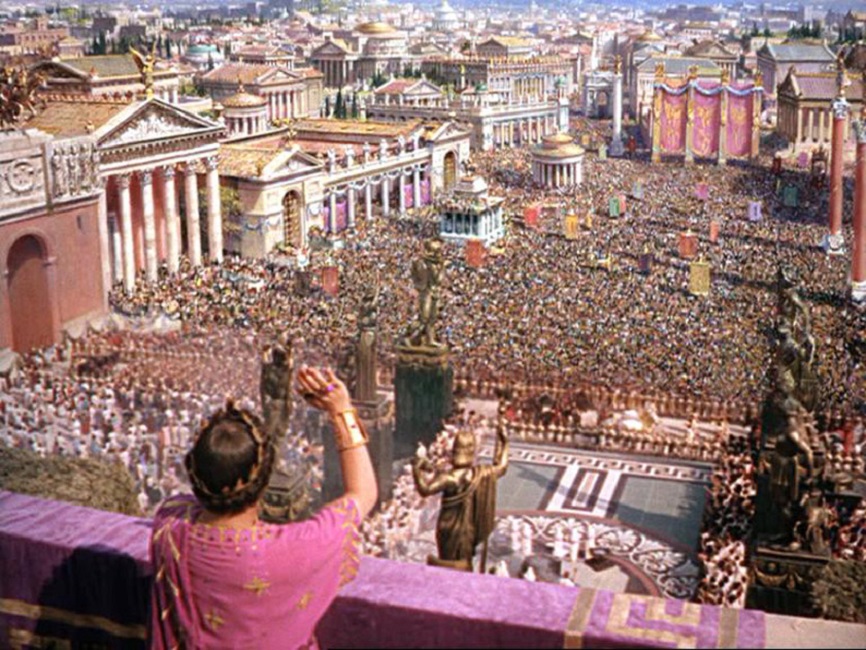
In the final scene of MGM’s magnum epic, the emperor Nero (Peter Ustinov) looked over his balcony and saw thousands of people storming his palace to kill him. He said to himself, “Is this then, the end of Nero?” (thus, preceding Edward G. Robinson in Little Caesar by about 1,800 years), as the glory that was Rome came crashing down.
There are 3 gargantuan scenes in the movie that required a lot of extras. And when we say a lot, we mean A LOT: The procession into Rome of Marcus Vinicius (Robert Taylor), the burning of Rome, and the spectacle of Christians being fed to the lions in Nero’s Circus.
In the procession scene, the casting call read something like this: 10 Roman generals, 5 Egyptian dignitaries, 5 Syrian dignitaries, 5 African dignitaries, 40 Praetorian guards, 30 standard bearers, 7 cavalry officers, 295 cavalry, 79 members of the band, 6 infantry officers, 12 infantry non-coms, 708 infantry soldiers, 10 dancing priests, 10 trumpeters, 36 women choir singers, 10 vestal virgins, 24 flower girls, 115 high class men, 510 middle class men, 1,750 lower class men, and a corresponding number of women. That’s some street party they got there. In it, director Mervyn LeRoy used 4 Technicolor cameras in 4 camera towers with 16 assistant directors helping him.
In the burning of Rome, the director herded 2,000 extras through a 4-block set amid pyrotechnics, with luckily, no accidents (it was said that Sophia Loren and Elizabeth Taylor were among the extras). It took them 24 nights to burn the set down, longer than the actual 6 days that happened historically.
Then, in the Circus of Nero, a set was built to seat 30,000 spectators. The 63 lions that ravaged the Christians came from all over Europe and the bull that was to gore Deborah Kerr arrived from Portugal with 6 others. Other animals that were acquired for the movie include 2 cheetahs, 5 rams, 3 cows and calves and 450 horses.
Filmed on location in Rome and Cinecitta Studios, LeRoy employed a kind of militaristic approach to control the enormous cast. He and his assistants coordinate with an experienced extra called a Generaci, who is in charge of a unit of 30 extras (Comparse) and whose primary responsibility was to ensure they go in and out of wardrobe on time, designated with a unique flag color. The Generaci was also in charge of their 20-minute chow time break in outdoor cafeterias that could sit 2,000 and come payday, distributed each one’s salary. Of course, it is safe to assume the Generaci got paid more.
SIDE NOTE: Quo Vadis (“Where are you going?” in Latin) used 32,000 costumes which came from 52,400 yards of material. Deborah Kerr alone, had 36 costume changes. The costumes went with 15,000 hand-sewn sandals, 13,000 jewelries, 4,000 helmets, 4,000 breastplates, and 2,000 shields. Yep, that’s old Hollywood for you.
3. The Ten Commandments (1956)
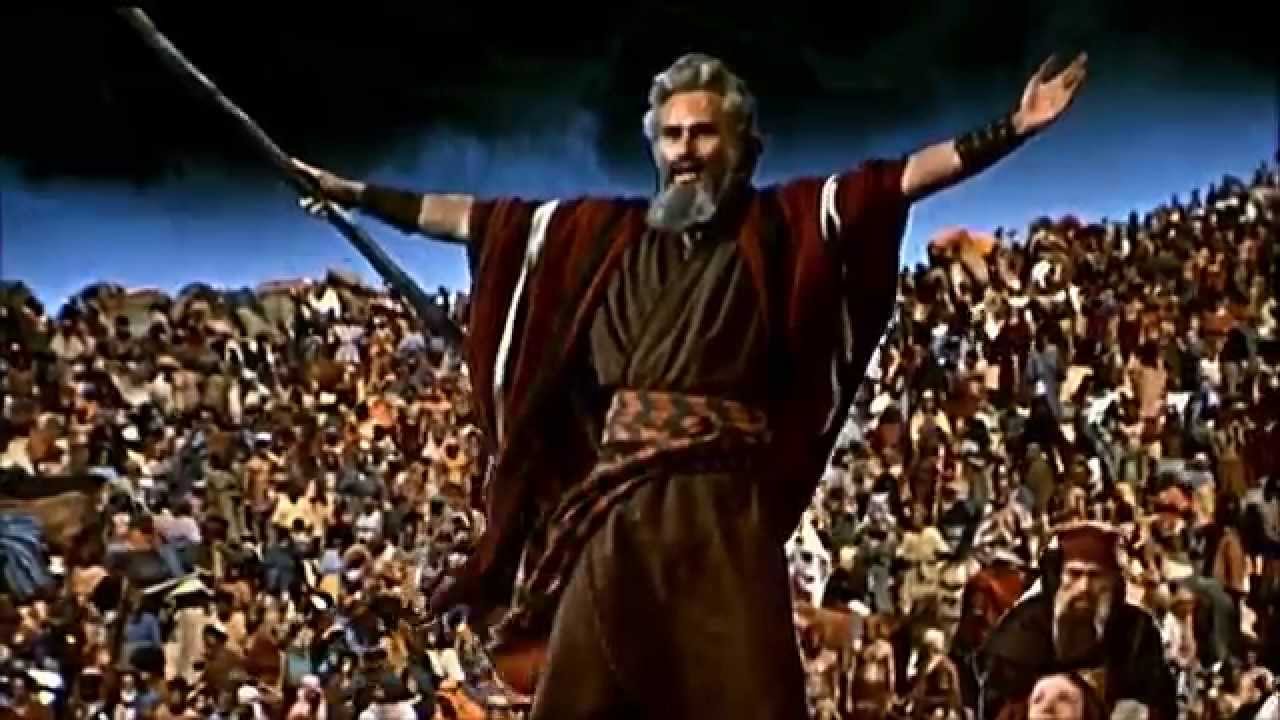
Cecil B. DeMille’s The Ten Commandments, released by Paramount Pictures is the quintessential biblical epic. The most exciting part of the bible with its themes of slavery, idolatry, retribution, test of faith, with a healthy dose of good old-fashioned wrath of God. And right smack in the middle is Moses (Charlton Heston), arguably, literature’s first super-hero (Yes, he even has a superhero origin).
With powers that include manipulating matter, control of the weather and the elements, the ability to summon plagues, and most of all, he could talk to you-know-who, the Ten Commandments play like an action/adventure and fantasy of biblical proportions.
Moses’ greatest accomplishment however, was liberating the slaves and thus creating the nation of Israel, demanding Ramses II (Yul Brynner) to, “Let my people go!” As the freed slaves came and amass at the city gates in preparation for their plight out of Egypt to a “land of milk and honey,” Moses could only whisper, “There are so many.”
He wasn’t kidding. 14,000 extras were employed in the movie to comprise all the tribes of Israel with Joshua (John Derek) imposing order on the horde, “Levites in the center, Judah to the right, Hephron to the left!” And with them, the Hebrews brought their cattle. Goats, camels, cows, sheep, donkeys, and geese.
For these, around 15,000 animals were used in the film. To control the exodus, DeMille was aided by 88 assistant directors, six from Hollywood and 82 from Egypt, where they shot in several locations. The government of Egypt also provided some 200 cavalry soldiers, horses, and equipment.
DeMille’s greatest triumph, The Ten Commandments remains one of the most successful films of all time. It was the highest grossing movie of 1956 with $65.5 million. Adjusted to today’s inflation, will result to over $1 billion, making it the highest-grossing biblical movie of all time, topping Ben-Hur, The Robe, and Passion of the Christ. It would also be DeMille’s last movie. He suffered a heart attack when making the film, although he recovered, his health had weakened. Thus, it was for DeMille, “Thou shall not make another bible movie again.”
4. Around The World In 80 Days (1956)
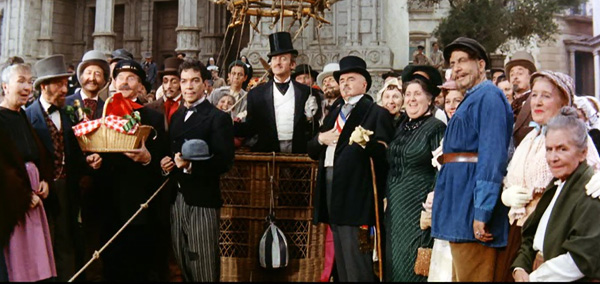
Oscar’s Best Picture in 1956 with 4 other awards (Editing, Cinematography, Score and Adapted Screenplay), Michael Anderson’s movie adaptation of the Jules Verne classic about an English gentleman named Phileas Fogg who, along with his faithful sidekick Passepartout, travelled across the world by hot air balloon, train, boat and other means, boasts of its massive manpower: cast and extras that totaled 68,894.
It is also famous for its star power. Headed by David Niven, Cantinflas, Shirley MacLaine and Robert Newton, there were also 50 name stars who appeared in the movie in bit roles: Frank Sinatra, Buster Keaton, Ronald Colman, Victor McLaglen, Trevor Howard, Peter Lorre, George Raft, Noel Coward, Evelyn Keyes, Martine Carol, and Marlene Dietrich, just to name a few. Producer Michael Todd was said to have coined the term “cameo” in reference to the star-studded appearances. The movie must’ve also started the trend of long closing credits. At 6 minutes and 21 seconds, it was the longest at the time.
The over 60,000 extras were spread out in 13 countries and 112 locations with big scenes like a bullfight in Spain with thousands of spectators and a wild, wild party in the West, USA. Other settings include England, United States, Spain, France, India, Japan and Thailand, with some 140 sets built.
The production got a lot of help from governments who loaned them boats and oarsmen and in the herding of animals. There were 8,552 animal extras, namely 3,800 sheep, 2,448 buffalos, 950 donkeys, 800 horses, 512 monkeys, 17 bulls, 15 elephants, 6 skunks and ostriches. Cast and extras were outfitted from 74,685 costumes and 36,092 trinkets rented from various movie studios which cost $410,000.
And it was all worth it. Even though producer Michael Todd nearly got broke from its $6 million budget, the total gross was an incredible $42 million.
5. Ben-Hur (1959)
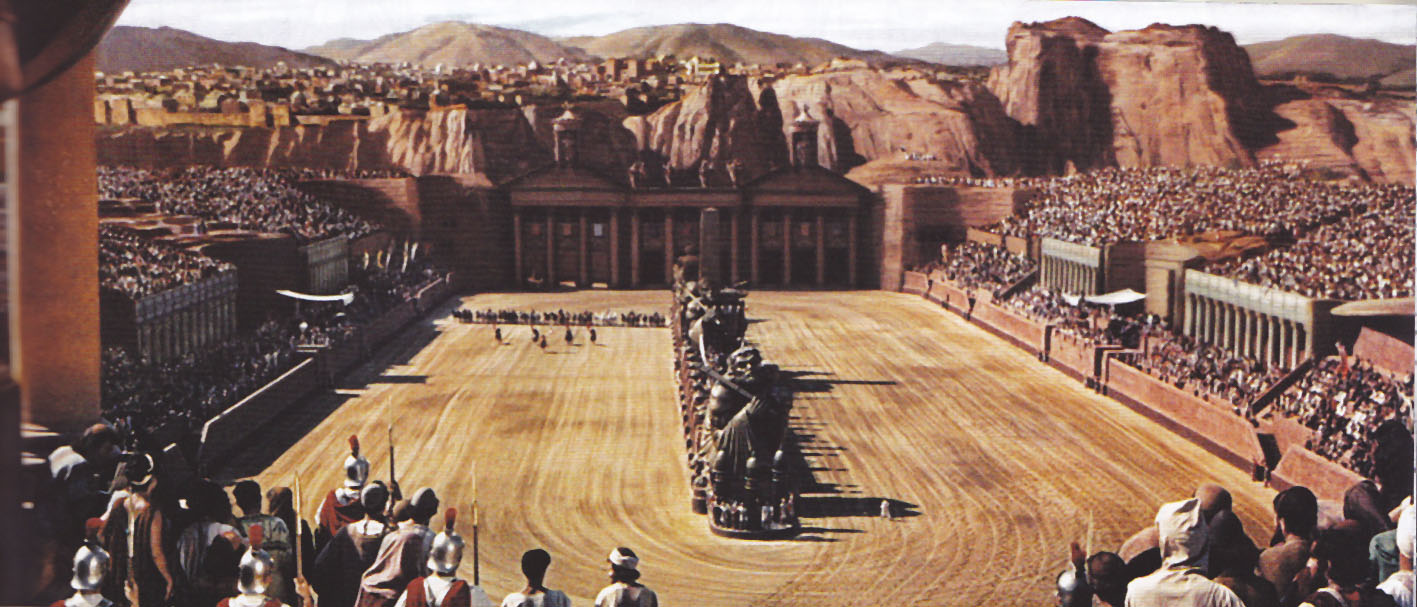
When you talk about William Wyler’s religious epic, its’ the chariot race that immediately comes to mind. That scene wherein the hero Ben-Hur (Charlton Heston) went against his one-time pal turned villain Messala (Stephen Boyd). It is breathtaking, thrilling, and absolutely gritty that owed much to one guy being a cheat: The wheels of Messala’s chariot is outfitted by metal spikes (no wonder he agreed to give the Shiek a 4:1 odds).
It is, to this day, one of the greatest action sequences ever made. It was second unit director Andrew Marton’s crowning achievement, who used 65mm cameras with a camera car capturing the action from the middle of the race. 82 horses were imported from Yugolslavia and 8,000 screaming extras filled the stadium. The chariot race scene took 10 weeks to shoot and cost around $4 million, a fourth of the entire budget.
The chariot race however, was not the only scene that required a lot of extras. Like Quo Vadis, Ben-Hur had its own procession thing going on which required Roman legions and whose costumes obviously were borrowed from the Robert Taylor movie. Then there were the scenes with Jesus, his sermon at the mount and the passion and crucifixion which required huge crowds. A total of 15,000 extras were used with a minimum of 1,500 at any given time.
Ben-Hur worked on a budget of $15 million which paid for 100,000 costumes. Costume Designer Elizabeth Hafferson worked with a staff of 100, with leather and silk that came from Thailand, Italy, France and the United Kingdom. 1,000 armors were manufactured in West Germany while jewelries were brought in from Switzerland. All in all, about a million props were used. Aside from the horses, hundreds of animals were used like camels, donkeys and sheep.
With its huge success at the box-office, Ben-Hur saved MGM from financial disaster. Not only that, it also won the race at the Academy Awards—nominated for 12, it won 11, and currently tied with Titanic (1997) and Lord of the Rings: The Return of the King (2003) for most awards won. It’s a good thing MGM backed the right horse.